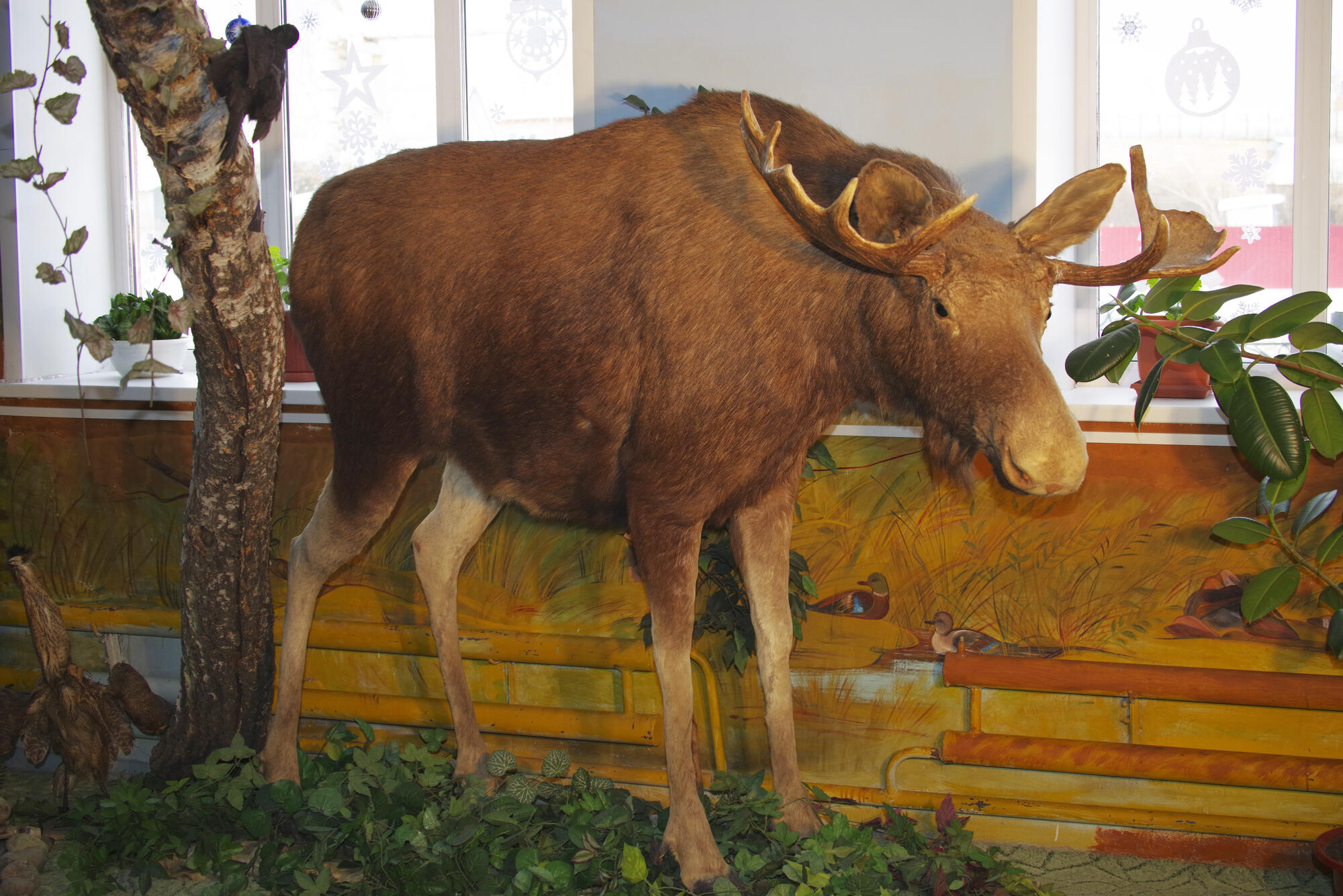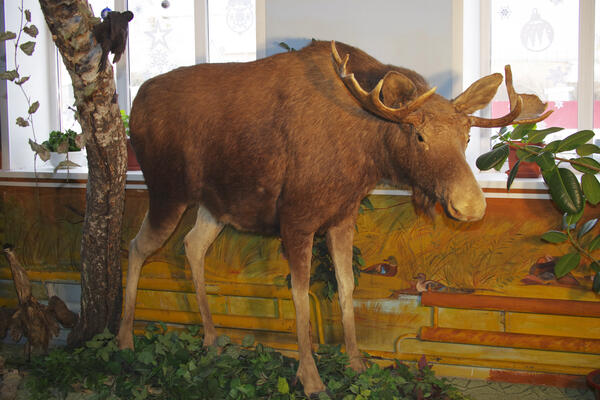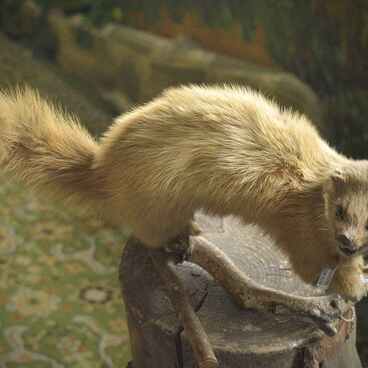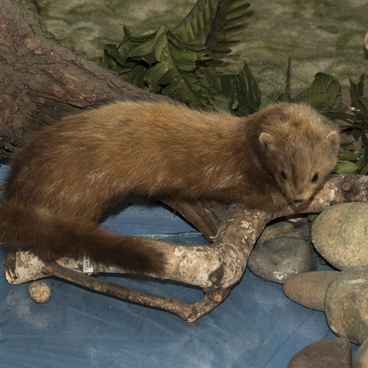The elk is a hoofed ruminant mammal from the family Cervidae. One distinguishing characteristic is its palmate antlers resembling a ‘sokha’ (a wooden plow). In fact, this animal’s nickname in Russian, “sokhaty”, originates from that word. Its height at the withers can be 2.3 meters, while the length of its body is 3 m. A young elk weighs approximately 300 kilograms, while larger adults can exceed 800 kg. Females are lighter than males, a dainty cow can weigh as little as 200 kilograms.
Elks are good runners. They can reach speeds of 70 km/h. These animals are also excellent swimmers. If the need arises, they can swim up to 20 km at a time and dive to depths of approximately 5 meters, holding their breaths for half a minute. The strike of its front leg is so powerful that it can kill a large animal.
The elk’s outer coat is relatively coarse but the underfur is soft. The animal’s body prepares for the winter well. Its coat grows by about 10 centimeters, and thus prevents the creature from getting cold in winter time. The hairs on its neck and withers is longer than usual, hence, the elk appears to have a mane.
Its antlers are this animal’s pride and joy. They can weigh as much as 20 kilograms, with a spread of almost 2 meters. Usually elks shed their antlers by the beginning of winter. In order to rid themselves of their pride and joy, they actively rub against trees until the antlers fall off. In spring, the animals re-grow new antlers, which harden in July. Elks prefer cool coniferous forests, where there are swampy areas, and small rivers and streams. They feel most comfortable in a forest-tundra because there is a large variety of trees in such regions. These animals enjoy feeding on medium-sized and low shrubs, which is why in winter, they suffer from a lack of suitable food. The elk has eight sizable and sharp incisors on the lower jaw for chewing food. The ruminants only eat plants, thus their teeth are well suited for lengthy mastication of food. They prefer eating grass, bushes, moss, mushrooms and lichen. Elks also enjoy consuming juicy leaves of mountain ashes, birches, maples and ashes. They also like swamp water lilies, kingcups, alligator-bonnets and young sedges. As for grasses, these animals prefer fireweed, willowherbs and sorrels. Their diet also includes berries, i.e. lingonberries and blueberries, and in autumn, tree bark.
In addition, elks consume fly amanitas without any fear. With the aid of these mushrooms, they rid their digestive systems of parasites. The animals mainly eat in the mornings and late in the evenings. In the middle of the day, they often rest in places that are free of bloodsucking insects. Elks live to about 25 years of age, but in the wild, their lifespans are about 10 years.
Elks are good runners. They can reach speeds of 70 km/h. These animals are also excellent swimmers. If the need arises, they can swim up to 20 km at a time and dive to depths of approximately 5 meters, holding their breaths for half a minute. The strike of its front leg is so powerful that it can kill a large animal.
The elk’s outer coat is relatively coarse but the underfur is soft. The animal’s body prepares for the winter well. Its coat grows by about 10 centimeters, and thus prevents the creature from getting cold in winter time. The hairs on its neck and withers is longer than usual, hence, the elk appears to have a mane.
Its antlers are this animal’s pride and joy. They can weigh as much as 20 kilograms, with a spread of almost 2 meters. Usually elks shed their antlers by the beginning of winter. In order to rid themselves of their pride and joy, they actively rub against trees until the antlers fall off. In spring, the animals re-grow new antlers, which harden in July. Elks prefer cool coniferous forests, where there are swampy areas, and small rivers and streams. They feel most comfortable in a forest-tundra because there is a large variety of trees in such regions. These animals enjoy feeding on medium-sized and low shrubs, which is why in winter, they suffer from a lack of suitable food. The elk has eight sizable and sharp incisors on the lower jaw for chewing food. The ruminants only eat plants, thus their teeth are well suited for lengthy mastication of food. They prefer eating grass, bushes, moss, mushrooms and lichen. Elks also enjoy consuming juicy leaves of mountain ashes, birches, maples and ashes. They also like swamp water lilies, kingcups, alligator-bonnets and young sedges. As for grasses, these animals prefer fireweed, willowherbs and sorrels. Their diet also includes berries, i.e. lingonberries and blueberries, and in autumn, tree bark.
In addition, elks consume fly amanitas without any fear. With the aid of these mushrooms, they rid their digestive systems of parasites. The animals mainly eat in the mornings and late in the evenings. In the middle of the day, they often rest in places that are free of bloodsucking insects. Elks live to about 25 years of age, but in the wild, their lifespans are about 10 years.



